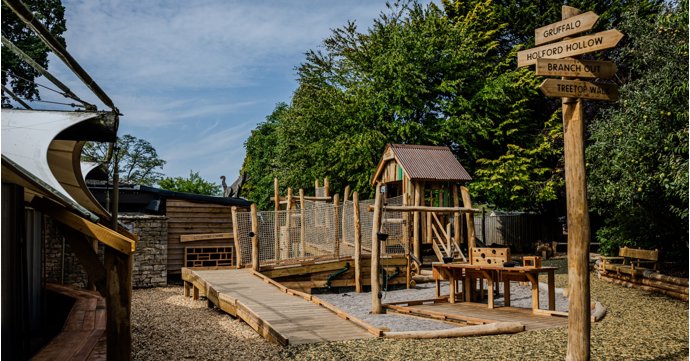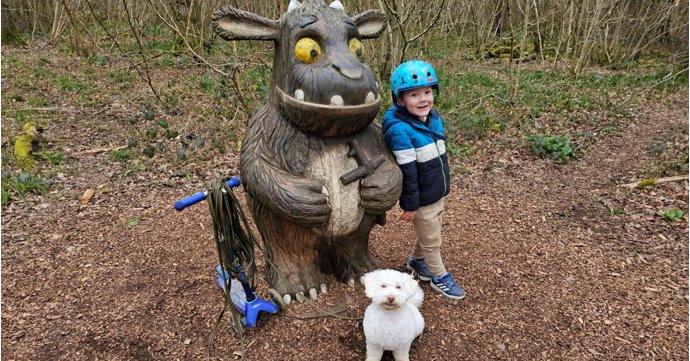Global issues like habitat loss, over-exploitation and climate change mean that more than 100 of the fascinating tree species that grow at Westonbirt, the National Arboretum are threatened with extinction in the wild.
SoGlos spoke to expert plant conservationist, Dan Crowley, to find out how the arboretum is contributing to vital tree conservation efforts across the world – and how Friends of Westonbirt Arboretum membership donations are supporting these invaluable projects.
About the expert – Dan Crowley from Botanic Gardens Conservation International

An expert in dendrology and plant conservation, Dan Crowley works for Botanic Gardens Conservation International – supporting Gloucestershire’s global tree garden, Westonbirt Arboretum, to develop its role in global tree conservation as part of his job.
Dan works closely with Forestry England and the Friends of Westonbirt Arboretum – a charity which funds conservation, development and maintenance at the arboretum to protect its botanical specimens and help it to thrive for generations to come.
Friends of Westonbirt Arboretum offers a host of benefits to its supporters – including free entry to the attraction for a whole year – through its annual membership scheme, which generates funds to support new and ongoing conservation projects at the arboretum.
Can you tell us a bit about your role at Westonbirt Arboretum?
I work for Botanic Gardens Conservation International (BGCI), which is the largest plant conservation network in the world, consisting of 500 botanic gardens in more than 100 countries. Our headquarters are at the Royal Botanic Gardens, Kew, and we have offices at other botanic gardens in global plant diversity hotspots.
My role is to manage a suite of Global Conservation Consortia – networks of specialists working on conserving highly threatened plant groups – and is hosted by Westonbirt, in partnership with the Friends of Westonbirt Arboretum and Forestry England. As well as working with colleagues around the world, I am working with Westonbirt colleagues to further develop the arboretum’s role in global tree conservation.
Currently, what are the main threats to trees?
Last year, BGCI published the State of the World’s Trees report, that states that one in three tree species is threatened with extinction in the wild. Globally, the greatest threats include habitat loss from agriculture and grazing, followed by over-exploitation from logging and harvesting. Climate change and extreme weather provide further threats, and as the temperature and weather of the world changes, many trees risk losing areas of suitable habitat.
How is the Global Conservation Consortia helping?
We have established consortia for some of the world’s most threatened plant groups, including oaks, maples, magnolias and rhododendrons. While these groups contain species that are very familiar, in parts of the world they are on the brink of extinction.
Focusing in these regions, we are working with local partners to address the conservation needs of these species, to conserve them in their natural habitats. Within the botanic garden community, we have the skills to ensure that no species goes extinct, and it is important that we share knowledge and work together to achieve this.
What role is Westonbirt Arboretum playing in global tree conservation efforts?
Here at Westonbirt, we are fortunate to have great expertise and facilities that can support tree conservation. We can share propagation experiences with the networks to help improve propagation successes among all who are growing these species.
Growing threatened species in collections like Westonbirt is an essential insurance policy for these species, and by caring for threatened trees in the collection, we are able to learn more about them, as well as making material available for research and, where applicable, for plant re-introductions.
We are also working to develop our role in supporting conservation efforts within species’ natural habitats, both nationally and internationally. While several of the threatened species that we grow are exotics, a high proportion of our native trees are also at risk of extinction. We have more than 30 threatened species, all belonging to the genus Sorbus, with several local to our area in the Wye Valley and Avon and Cheddar Gorges.
It is important that we work with other partners to conserve these species, as well as others from further afield including maples, which have always been an important group here at Westonbirt.
What specific project are you working on at present?
Excitingly, we’ve just completed work on the second edition of The Little Book of Disappearing Trees, which profiles some of the threatened species that we grow here at Westonbirt. It details each species’ plight, as well as information on how they are being conserved.
The first edition of The Little Book was published by Forestry England in 2017, but we decided to produce an update following the publication of the State of the World’s Trees report. We included 50 of the more than 100 threatened trees that we grow to give visitors more insight into these species, as well as background on some of work we are involved with alongside other botanic gardens.
Where is the book available?
The book is published by Forestry England and is now available at the Westonbirt Shop, priced at £4.95 – with a 10 per cent discount for Friends of Westonbirt Arboretum members.
The profits will go towards Westonbirt’s ’10-Year Vision’ to be a to be a world leader in trees inspiring people through education, conservation and participation.
Are there any other ways to support conservation projects at Westonbirt Arboretum?
The Friends of Westonbirt Arboretum offers an annual membership for a donation of £40 per year, which supports conservation research at the arboretum. In return, members receive a wealth of benefits including year-round access into the arboretum with up to four children, a 10 per cent discount off purchases in the Westonbirt shop and discounted entry into seven partner gardens.





















